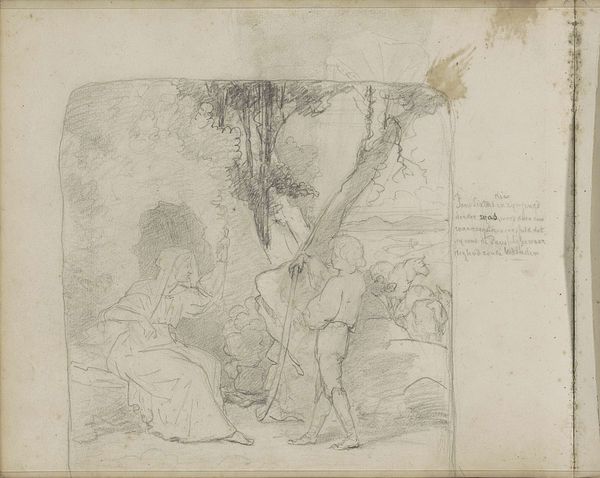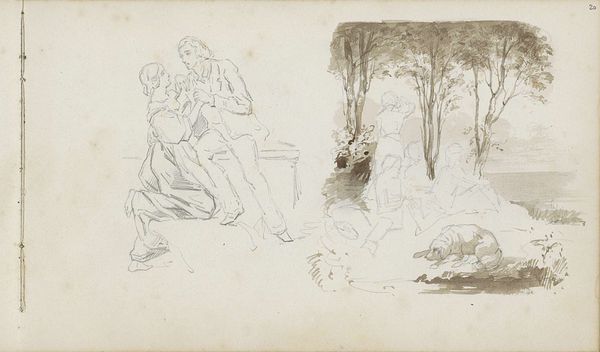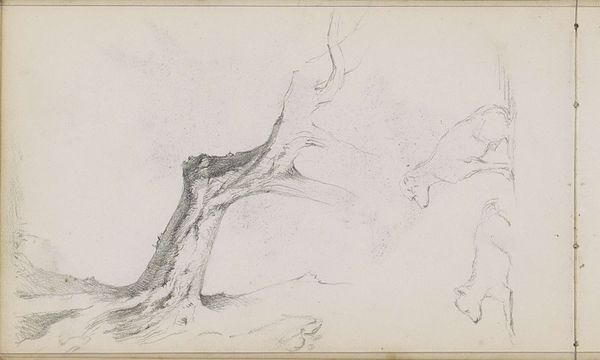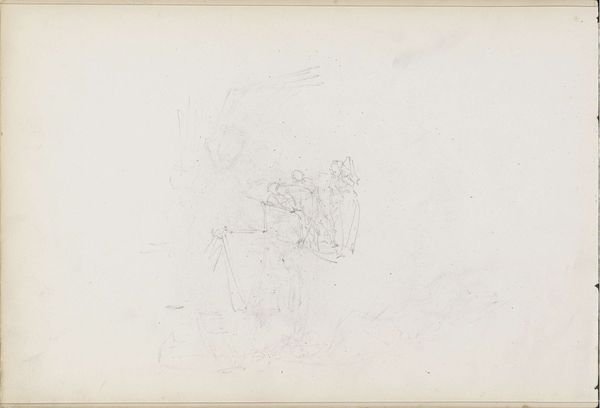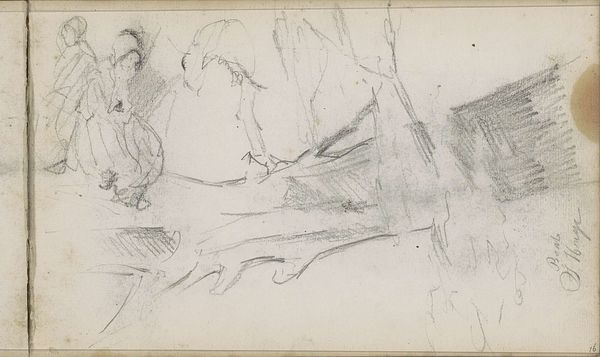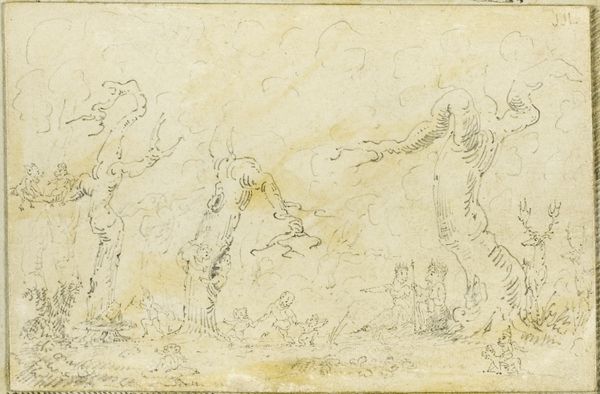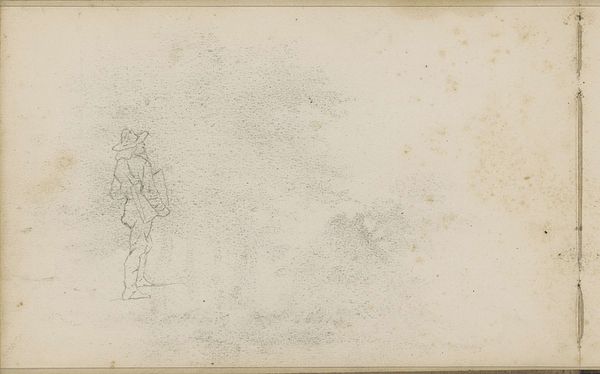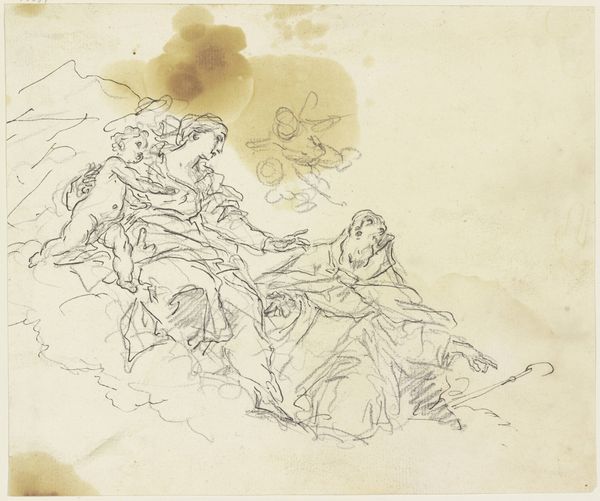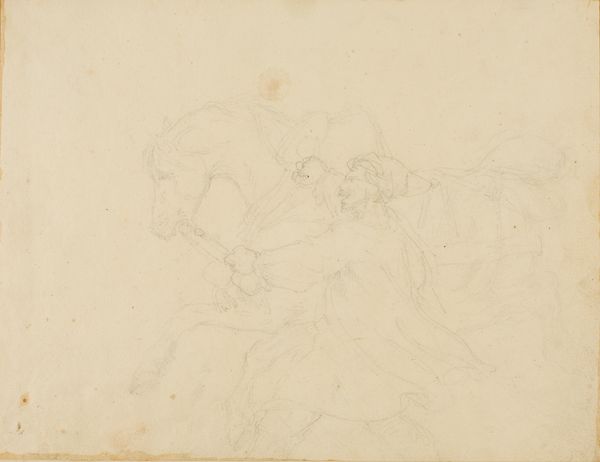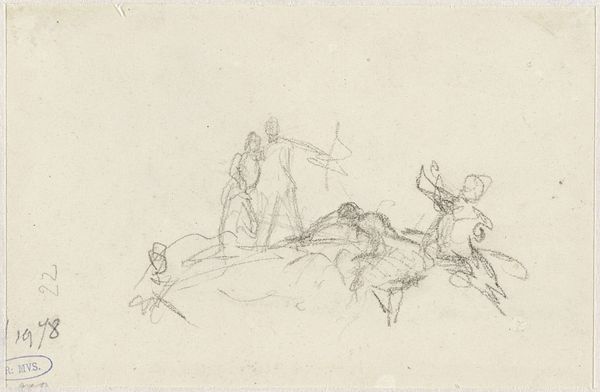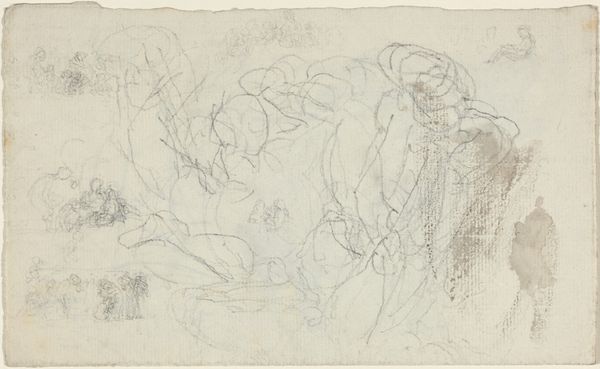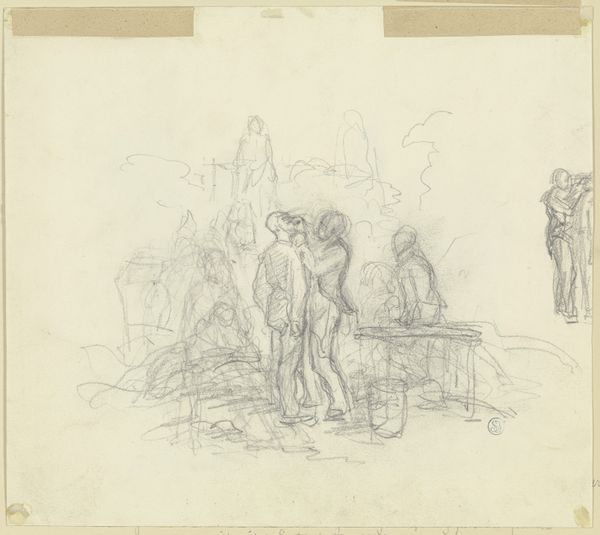
Dimensions: height 184 mm, width 282 mm
Copyright: Rijks Museum: Open Domain
Willem Cornelis Rip made this drawing of rocks and conifers with graphite on paper at an unknown date. Rip was a Dutch artist working at a time when the Netherlands was dealing with rapid urbanization and industrialization. Landscape art in the 19th century was often associated with ideas about national identity and the relationship between people and nature. Artists like Rip often focused on capturing the unique qualities of the Dutch landscape, even as that landscape was changing due to human intervention. This particular drawing reflects the artistic conventions of his time. It recalls the Dutch Romantic tradition which idealized nature as a refuge from the pressures of modern life. The choice of rocks and coniferous trees is interesting, since these sorts of landscapes would more easily be found in Germany at this time. Was Rip attempting to imagine a new kind of Dutch landscape? To understand Rip's work more fully, historians consult exhibition reviews, archival documents, and other writings from the period. This helps to reveal the social and institutional contexts that shaped his artistic vision.
Comments
No comments
Be the first to comment and join the conversation on the ultimate creative platform.
